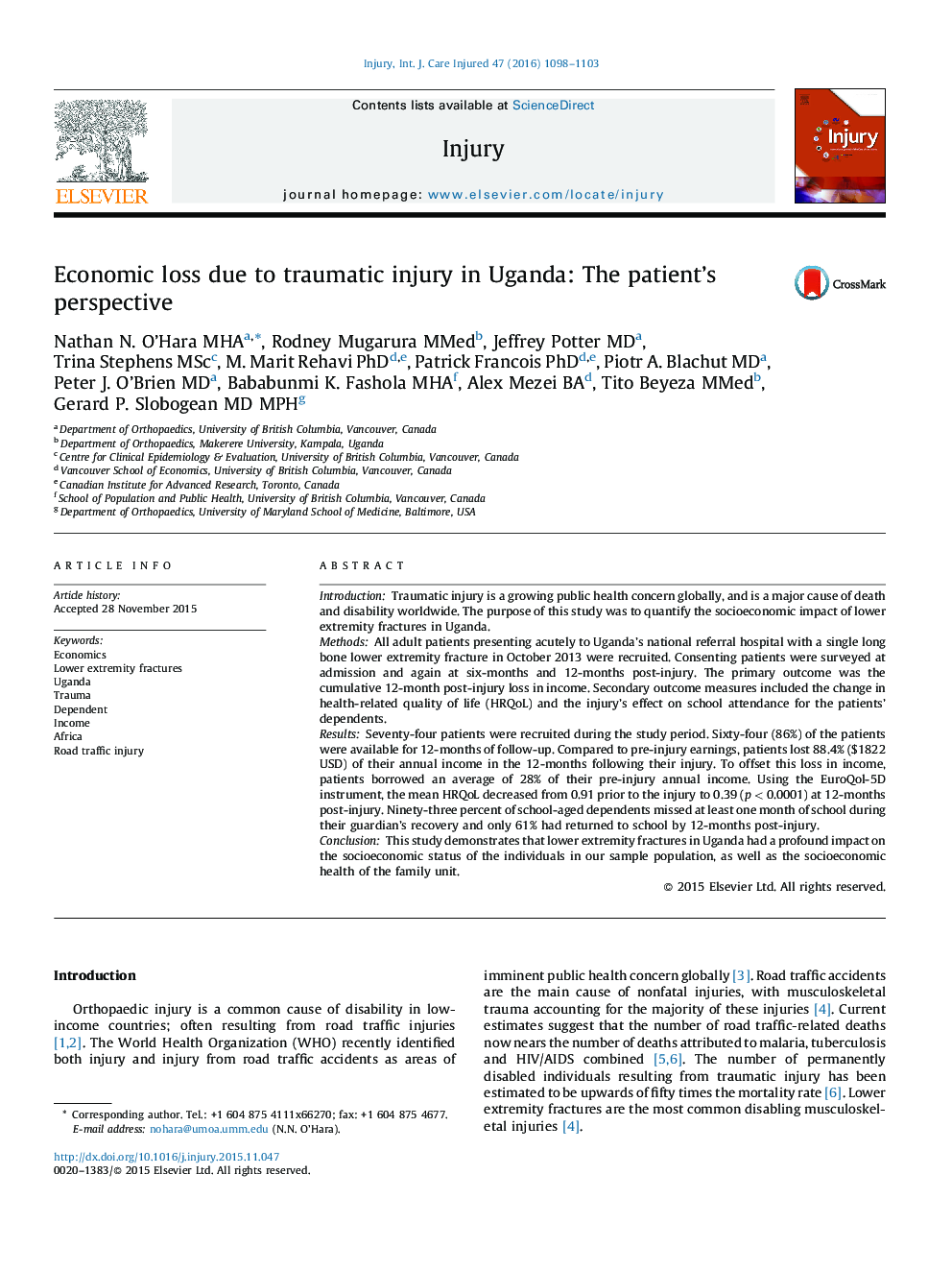| Article ID | Journal | Published Year | Pages | File Type |
|---|---|---|---|---|
| 6082831 | Injury | 2016 | 6 Pages |
IntroductionTraumatic injury is a growing public health concern globally, and is a major cause of death and disability worldwide. The purpose of this study was to quantify the socioeconomic impact of lower extremity fractures in Uganda.MethodsAll adult patients presenting acutely to Uganda's national referral hospital with a single long bone lower extremity fracture in October 2013 were recruited. Consenting patients were surveyed at admission and again at six-months and 12-months post-injury. The primary outcome was the cumulative 12-month post-injury loss in income. Secondary outcome measures included the change in health-related quality of life (HRQoL) and the injury's effect on school attendance for the patients' dependents.ResultsSeventy-four patients were recruited during the study period. Sixty-four (86%) of the patients were available for 12-months of follow-up. Compared to pre-injury earnings, patients lost 88.4% ($1822 USD) of their annual income in the 12-months following their injury. To offset this loss in income, patients borrowed an average of 28% of their pre-injury annual income. Using the EuroQol-5D instrument, the mean HRQoL decreased from 0.91 prior to the injury to 0.39 (p < 0.0001) at 12-months post-injury. Ninety-three percent of school-aged dependents missed at least one month of school during their guardian's recovery and only 61% had returned to school by 12-months post-injury.ConclusionThis study demonstrates that lower extremity fractures in Uganda had a profound impact on the socioeconomic status of the individuals in our sample population, as well as the socioeconomic health of the family unit.
